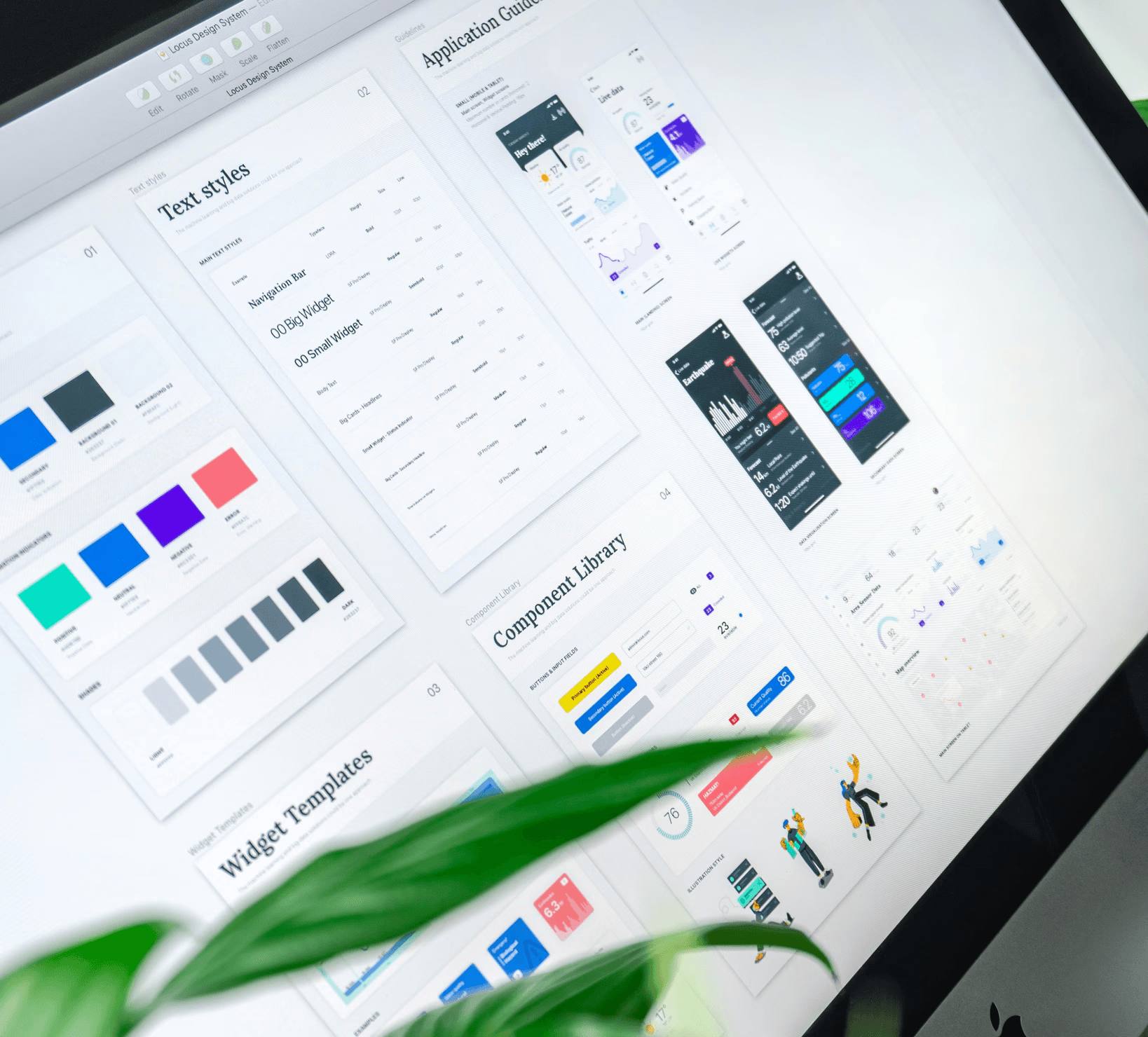
Ramp Up on New Subjects
How I manage technical context to craft accessible user journeys and bring insight to the product team
To enhance my skills in technical subjects, particularly those related to the world of data and data science, I have combined several approaches. Here are the main actions I take to grasp a new domain, whether technical or not.
1. Literature Review and Web Research
The first step in my learning process involves an in-depth review of the available literature and intensive web research. I consult academic articles, specialized books, and reference blogs. For example, I regularly read scientific journal articles or fundamental works (check out "My Library").
2. Online Courses
I complement this theoretical approach with online courses, notably on Udemy Business. See my obtained certifications listed on LinkedIn.
3. Podcasts and News Feeds
To stay updated on the latest trends and discoveries, I listen to specialized podcasts like "Data Gen" or "Clef de voûte". I also follow news feeds on LinkedIn from influential people in the field, such as Emmanuel Vivier on AI Gen, or groups like Vitaly Friedman on user experience.
4. Discussions and Interviews
My professional experiences have offered me the opportunity to enhance my skills through enriching discussions with technical profiles. For example, during collaborations with data scientists and software engineers, I have deepened my understanding of data professions and the issues these users face.
5. Job Description Analysis and Competitive Intelligence
Analyzing job descriptions and competitive intelligence are also key elements of my learning process. By examining the skills required for data scientist or data analyst positions, I can target my training efforts. Moreover, competitive intelligence allows me to understand how other companies use data science to innovate.
6. Knowledge Sharing on Internal Monitoring Channels
Within my organization, I actively participate in internal monitoring channels where we share articles, case studies, and feedback. This knowledge sharing fosters collective learning and helps me consolidate my knowledge.
7. Analysis of Marketing Team Studies
Finally, analyzing studies produced by marketing teams provides valuable insights into the concrete application of data science in improving business performance and customer satisfaction. For example, by studying market analyses and customer behaviors, I have understood the importance of predictive models and segmentation analyses.

Ramp Up on New Subjects
How I manage technical context to craft accessible user journeys and bring insight to the product team
To enhance my skills in technical subjects, particularly those related to the world of data and data science, I have combined several approaches. Here are the main actions I take to grasp a new domain, whether technical or not.
1. Literature Review and Web Research
The first step in my learning process involves an in-depth review of the available literature and intensive web research. I consult academic articles, specialized books, and reference blogs. For example, I regularly read scientific journal articles or fundamental works (check out "My Library").
2. Online Courses
I complement this theoretical approach with online courses, notably on Udemy Business. See my obtained certifications listed on LinkedIn.
3. Podcasts and News Feeds
To stay updated on the latest trends and discoveries, I listen to specialized podcasts like "Data Gen" or "Clef de voûte". I also follow news feeds on LinkedIn from influential people in the field, such as Emmanuel Vivier on AI Gen, or groups like Vitaly Friedman on user experience.
4. Discussions and Interviews
My professional experiences have offered me the opportunity to enhance my skills through enriching discussions with technical profiles. For example, during collaborations with data scientists and software engineers, I have deepened my understanding of data professions and the issues these users face.
5. Job Description Analysis and Competitive Intelligence
Analyzing job descriptions and competitive intelligence are also key elements of my learning process. By examining the skills required for data scientist or data analyst positions, I can target my training efforts. Moreover, competitive intelligence allows me to understand how other companies use data science to innovate.
6. Knowledge Sharing on Internal Monitoring Channels
Within my organization, I actively participate in internal monitoring channels where we share articles, case studies, and feedback. This knowledge sharing fosters collective learning and helps me consolidate my knowledge.
7. Analysis of Marketing Team Studies
Finally, analyzing studies produced by marketing teams provides valuable insights into the concrete application of data science in improving business performance and customer satisfaction. For example, by studying market analyses and customer behaviors, I have understood the importance of predictive models and segmentation analyses.

Ramp Up on New Subjects
How I manage technical context to craft accessible user journeys and bring insight to the product team
To enhance my skills in technical subjects, particularly those related to the world of data and data science, I have combined several approaches. Here are the main actions I take to grasp a new domain, whether technical or not.
1. Literature Review and Web Research
The first step in my learning process involves an in-depth review of the available literature and intensive web research. I consult academic articles, specialized books, and reference blogs. For example, I regularly read scientific journal articles or fundamental works (check out "My Library").
2. Online Courses
I complement this theoretical approach with online courses, notably on Udemy Business. See my obtained certifications listed on LinkedIn.
3. Podcasts and News Feeds
To stay updated on the latest trends and discoveries, I listen to specialized podcasts like "Data Gen" or "Clef de voûte". I also follow news feeds on LinkedIn from influential people in the field, such as Emmanuel Vivier on AI Gen, or groups like Vitaly Friedman on user experience.
4. Discussions and Interviews
My professional experiences have offered me the opportunity to enhance my skills through enriching discussions with technical profiles. For example, during collaborations with data scientists and software engineers, I have deepened my understanding of data professions and the issues these users face.
5. Job Description Analysis and Competitive Intelligence
Analyzing job descriptions and competitive intelligence are also key elements of my learning process. By examining the skills required for data scientist or data analyst positions, I can target my training efforts. Moreover, competitive intelligence allows me to understand how other companies use data science to innovate.
6. Knowledge Sharing on Internal Monitoring Channels
Within my organization, I actively participate in internal monitoring channels where we share articles, case studies, and feedback. This knowledge sharing fosters collective learning and helps me consolidate my knowledge.
7. Analysis of Marketing Team Studies
Finally, analyzing studies produced by marketing teams provides valuable insights into the concrete application of data science in improving business performance and customer satisfaction. For example, by studying market analyses and customer behaviors, I have understood the importance of predictive models and segmentation analyses.

Ramp Up on New Subjects
How I manage technical context to craft accessible user journeys and bring insight to the product team
To enhance my skills in technical subjects, particularly those related to the world of data and data science, I have combined several approaches. Here are the main actions I take to grasp a new domain, whether technical or not.
1. Literature Review and Web Research
The first step in my learning process involves an in-depth review of the available literature and intensive web research. I consult academic articles, specialized books, and reference blogs. For example, I regularly read scientific journal articles or fundamental works (check out "My Library").
2. Online Courses
I complement this theoretical approach with online courses, notably on Udemy Business. See my obtained certifications listed on LinkedIn.
3. Podcasts and News Feeds
To stay updated on the latest trends and discoveries, I listen to specialized podcasts like "Data Gen" or "Clef de voûte". I also follow news feeds on LinkedIn from influential people in the field, such as Emmanuel Vivier on AI Gen, or groups like Vitaly Friedman on user experience.
4. Discussions and Interviews
My professional experiences have offered me the opportunity to enhance my skills through enriching discussions with technical profiles. For example, during collaborations with data scientists and software engineers, I have deepened my understanding of data professions and the issues these users face.
5. Job Description Analysis and Competitive Intelligence
Analyzing job descriptions and competitive intelligence are also key elements of my learning process. By examining the skills required for data scientist or data analyst positions, I can target my training efforts. Moreover, competitive intelligence allows me to understand how other companies use data science to innovate.
6. Knowledge Sharing on Internal Monitoring Channels
Within my organization, I actively participate in internal monitoring channels where we share articles, case studies, and feedback. This knowledge sharing fosters collective learning and helps me consolidate my knowledge.
7. Analysis of Marketing Team Studies
Finally, analyzing studies produced by marketing teams provides valuable insights into the concrete application of data science in improving business performance and customer satisfaction. For example, by studying market analyses and customer behaviors, I have understood the importance of predictive models and segmentation analyses.

Ramp Up on New Subjects
How I manage technical context to craft accessible user journeys and bring insight to the product team
To enhance my skills in technical subjects, particularly those related to the world of data and data science, I have combined several approaches. Here are the main actions I take to grasp a new domain, whether technical or not.
1. Literature Review and Web Research
The first step in my learning process involves an in-depth review of the available literature and intensive web research. I consult academic articles, specialized books, and reference blogs. For example, I regularly read scientific journal articles or fundamental works (check out "My Library").
2. Online Courses
I complement this theoretical approach with online courses, notably on Udemy Business. See my obtained certifications listed on LinkedIn.
3. Podcasts and News Feeds
To stay updated on the latest trends and discoveries, I listen to specialized podcasts like "Data Gen" or "Clef de voûte". I also follow news feeds on LinkedIn from influential people in the field, such as Emmanuel Vivier on AI Gen, or groups like Vitaly Friedman on user experience.
4. Discussions and Interviews
My professional experiences have offered me the opportunity to enhance my skills through enriching discussions with technical profiles. For example, during collaborations with data scientists and software engineers, I have deepened my understanding of data professions and the issues these users face.
5. Job Description Analysis and Competitive Intelligence
Analyzing job descriptions and competitive intelligence are also key elements of my learning process. By examining the skills required for data scientist or data analyst positions, I can target my training efforts. Moreover, competitive intelligence allows me to understand how other companies use data science to innovate.
6. Knowledge Sharing on Internal Monitoring Channels
Within my organization, I actively participate in internal monitoring channels where we share articles, case studies, and feedback. This knowledge sharing fosters collective learning and helps me consolidate my knowledge.
7. Analysis of Marketing Team Studies
Finally, analyzing studies produced by marketing teams provides valuable insights into the concrete application of data science in improving business performance and customer satisfaction. For example, by studying market analyses and customer behaviors, I have understood the importance of predictive models and segmentation analyses.
Other EXPERIENCES
Other EXPERIENCES
Other EXPERIENCES
Other EXPERIENCES
Other EXPERIENCES




